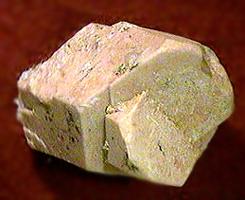
The feldspar group is the most prevalent group of minerals in the earth's crust. It makes up about 60% of all crust minerals. Quartz and feldspar make up 75% of the volume of the continental crust.
It too has the 3D silicate structure, but one of the silicates has been substituted with Al+3. In order to electronically balance the structure the mineral requires an additional component. (Si+4 vs. Al+3) The additional cations are usually K+, Na+ or Ca+2.
The two major categories are potassium feldspar and plagioclase (Ca rich feldspar.) The formulas are:
potassium feldspar: KAlSi3O8
plagioclase: (Na,Ca)AlSi3O8
Potassium feldspars may be substituted with small amounts of Fe+3 (iron) and this can make them pink or green.
Plagioclase is made up of a mixture with two different "end members".
|
|
|
|
|
|
|
|
Since Calcium has two units of charge, the ratio of Al to Si must change in anorthite to create a neutral compound.
KAlSi3O8
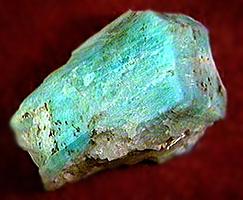
KAlSi3O8
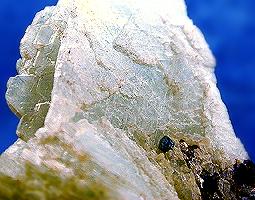
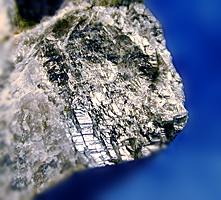
NaAlSi3O8
(Na,Ca)AlSi3O8
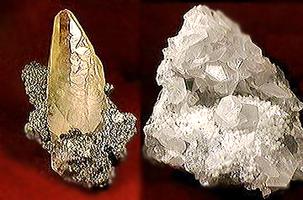
Carbonate, sulfate and phosphate minerals. The carbonate ion CO3-2 is common in the crust mineralogy, and it can form minerals with many cations. The most abundant carbonate is calcite, CaCO3. Calcite and aragonite have the same composition but differ by crystal structure. Another prevalent carbonate is dolomite with the formula CaMg(CO3)2.
Differentiating calcite and dolomite is not easy by normal means. They both have the same cleavage, and the same luster. They have similar specific gravity: 2.7 (calcite), 2.85 (dolomite.) The quick test is with hydrochloric acid. When treated with dilute hydrochloric acid the calcite will bubble and react, but dolomite will be inactive.
Calcite is one of the main constituents of Portland cement. In its rock form (limestone) it is used in smelting iron, and is used in various building material. It is used in dry wall, and as stone in walls.
CaCO3
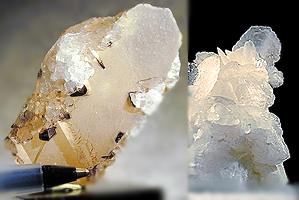
CaMgCO3
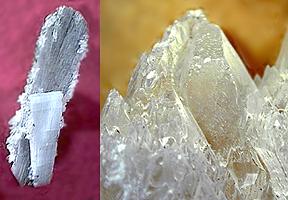
Sulfates are another common species in mineral formation SO4-2. There are many sulfates in the crust, but two of the most common are anhydrite and gypsum.
Anhydrite (calcium sulfate) CaSO4 has the same general chemistry as gypsum. Gypsum is the hydrated mineral CaSO4 • 2 H2O. Gypsum is used to make plaster of Paris.
Phosphates contain the anion PO4-3, and the most important phosphate mineral is apatite. Although not thought of as a gem material the blue variety is gaining some popularity. The main use for apatite is in fertilizer.
CaSO4
CaSO4 • 2 H2O
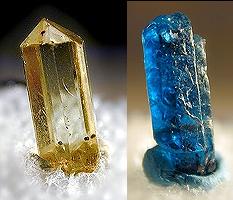
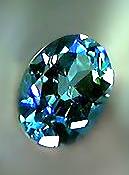
Ca5(PO4)3(F,CL,OH)
| NEXT | TOC | PREV |